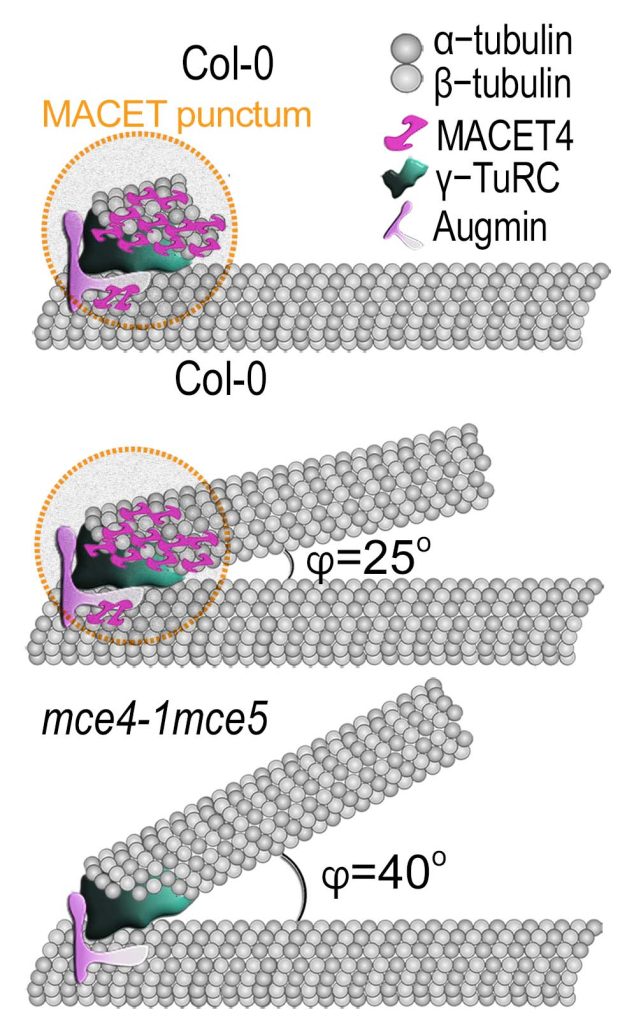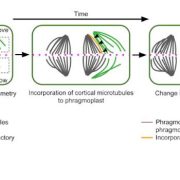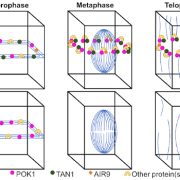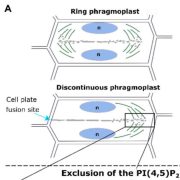Examination of the plant cytokinesis machinery reveals the rules of cellular asymmetry
Schmidt-Marcec, Parish and colleagues characterize members of the MACERATOR (MACET) family of proteins in the context of cell division.
https://doi.org/10.1093/plcell/koad304
By Sharol Schmidt-Marcec, Alyssa Parish, Tetyana Smertenko, Matthew Hickey, Bernard M.A.G. Piette, Andrei Smertenko
Institute of Biological Chemistry, Washington State University, Pullman, WA99164, USA; Department of Mathematics, Durham University, Durham UK
Background: The success of many cellular programs depends on asymmetry, resulting from a shift of cellular components from an even to an uneven distribution. Understanding the rules of cellular asymmetry requires information about structural blocks and their behavior in specific contexts. We use cell division as a model system to explore cellular asymmetry. Cells in land plants divide via the formation of a cell plate, a partition formed of membranes and oligosaccharides. The cell plate is constructed by an asymmetrical structure known as the phragmoplast, whose structure is maintained by microtubules, 25-nm thick tubes built from the protein tubulin. Microtubules govern phragmoplast asymmetry through three types of behavior: nucleation (birth of a new microtubule), growth, and shrinkage. The transition between these behaviors is controlled by tubulin availability: higher tubulin abundance promotes microtubule polymerization, whereas low tubulin abundance triggers depolymerization. Cells contain a fixed amount of tubulin, meaning that microtubule polymerization causes depletion of tubulin, leading to depolymerization and vice versa.
 Question: What is the role of microtubule nucleation and geometry in phragmoplast asymmetry?
Question: What is the role of microtubule nucleation and geometry in phragmoplast asymmetry?
Findings: We analyzed the Arabidopsis thaliana MACERATOR (MACET) family comprising seven plant-specific microtubule-nucleating proteins. Mutants lacking MACET4 and MACET5 function (mce4-1 mce5) showed defective phragmoplast asymmetry and morphology caused by a greater angle of branched microtubule nucleation. MACET4 interacts with the plant-specific microtubule nucleation factor AUGMIN7. Simultaneous mutation of MACET4, MACET5, and AUGMIN7, causes plant lethality. A computational analysis revealed that microtubule nucleation by MACET depletes tubulin, leading to destabilization of phragmoplast microtubules. Hence, assembly factors contribute to cellular asymmetry directly by defining the architecture of cellular structures and indirectly by the controlling abundance of their building blocks.
Next steps: Identification and functional characterization of proteins that cooperate with MACET. Determining the rules of cellular asymmetry would advance understanding of life and enable engineering of living systems.
Reference:
Sharol Schmidt-Marcec, Alyssa Parish, Tetyana Smertenko, Matthew Hickey, Bernard M.A.G. Piette, Andrei Smertenko (2024). The microtubule nucleating factor MACERATOR tethers AUGMIN7 to microtubules and governs phragmoplast architecture. https://doi.org/10.1093/plcell/koad304






